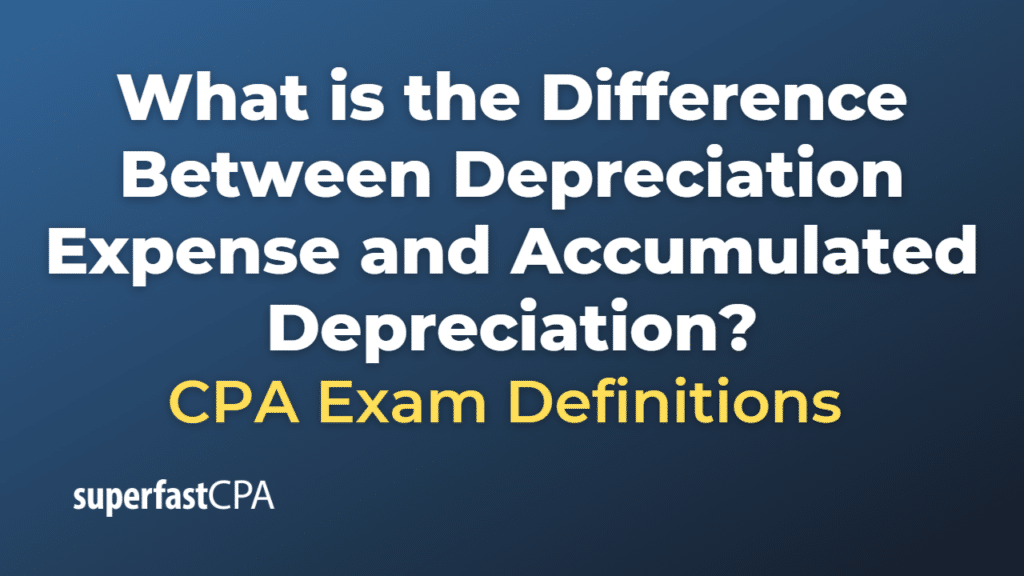Difference Between Depreciation Expense and Accumulated Depreciation
Depreciation Expense and Accumulated Depreciation are two related concepts in accounting that deal with the allocation of the cost of tangible assets over their useful life. However, they represent two different aspects of this process:
- Depreciation Expense: This is the amount of the asset’s cost that is allocated to each accounting period (usually a year) during the asset’s life. It is an expense because it represents the portion of the asset’s cost that has been used up during that period. This is typically recorded on the income statement.
- Accumulated Depreciation: This is the total amount of a tangible asset’s cost that has been depreciated (i.e., allocated to the cost of doing business) up to a specific point in time. It is a contra-asset account – an asset account with a credit balance – and is reported on the balance sheet under Property, Plant, and Equipment (PP&E). Accumulated depreciation increases over time as depreciation expense is charged against the value of the fixed asset.
In summary, while depreciation expense represents the amount of cost allocated in a single period, accumulated depreciation represents the total amount of cost allocated up until a certain point in time.
Example of the Difference Between Depreciation Expense and Accumulated Depreciation
Let’s consider a company, “BizCo,” which buys a machine for its manufacturing operations. The machine costs $10,000 and is expected to have a useful life of 10 years, with no salvage value.
- Depreciation Expense: BizCo would use a straight-line depreciation method, which means the same amount of depreciation is recognized each year. The annual depreciation expense would be the cost of the machine divided by its useful life, or $10,000 / 10 years = $1,000 per year. This $1,000 is recognized as depreciation expense on the income statement each year.
- Accumulated Depreciation: Each year, the depreciation expense is added to the accumulated depreciation, which starts at zero when the machine is purchased. After the first year, the accumulated depreciation would be $1,000. After the second year, the accumulated depreciation would be $2,000 ($1,000 from the first year + $1,000 from the second year), and so on. After 10 years, the accumulated depreciation would equal the original cost of the machine, or $10,000.
This way, the machine’s cost is gradually recognized as an expense over its useful life, and the value of the machine on the balance sheet (its “book value”) is gradually reduced from its original cost to its salvage value (which in this case is zero). The book value is calculated as the original cost minus the accumulated depreciation.













